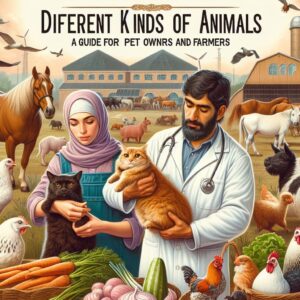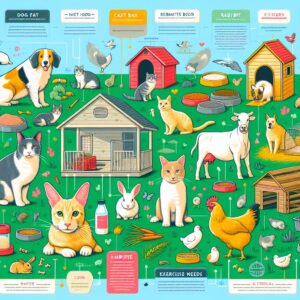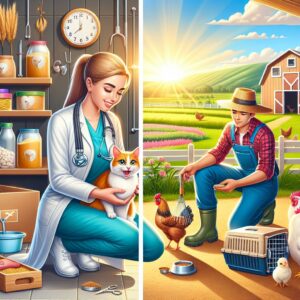As pet owners and farmers, we have the privilege and responsibility of caring for a variety of animals. Whether we have domestic pets or livestock on our farms, ensuring their health and well-being is of utmost importance. In this article, we will explore the essential aspects of animal care, providing helpful tips for both pet owners and farmers alike.
Pet Ownership: A Commitment to Lifelong Care
Taking on the responsibility of owning a pet is an important decision that should not be taken lightly. From dogs and cats to smaller animals like hamsters and rabbits, looking after them requires time, effort, and commitment. Here are some key aspects to consider when caring for your pets:
Nutrition
Providing a balanced and nutritious diet is crucial for the overall wellness of your pets. Consult with a veterinarian to determine the best type and quantity of food for your specific animal. Remember to avoid overfeeding, as obesity can lead to various health issues.
Exercise and Mental Stimulation
Just like humans, pets need physical exercise and mental stimulation to stay healthy and happy. Regular walks, playtime, and interactive toys are great ways to keep your pets active and engaged. Not only will they benefit physically, but their behavior and overall mental well-being will improve as well.
Regular Veterinary Check-ups
Routine visits to the veterinarian are essential for detecting any potential health issues early on and ensuring your pet’s vaccinations are up to date. Discuss with your vet the appropriate schedule for vaccinations, deworming, and dental care to maintain your pet’s optimal health.
Hygiene and Grooming
Maintaining proper hygiene is vital for your pet’s health. Regular grooming, including bathing, brushing, and nail trims, helps prevent skin infections, matting, and other common issues. Additionally, be sure to clean your pet’s belongings, such as bedding, toys, and food bowls, regularly to avoid the buildup of bacteria.
Animal Husbandry: Caring for Livestock
For farmers, the care and well-being of livestock animals are essential for maintaining a successful farming operation. Here is a guide to promote the health and productivity of your livestock:
Proper Housing
Providing adequate shelter and living conditions is crucial for livestock animals. Ensure that the housing is well-ventilated, clean, and spacious enough to accommodate all the animals comfortably. Proper drainage systems and protection from extreme weather conditions are also essential.
Balanced Diet
Similar to pets, livestock animals require a well-balanced diet to thrive. Consult with an animal nutritionist to create a diet plan that meets the specific needs of your livestock, considering factors such as age, breed, and purpose (milk or meat production). Access to clean and fresh water should always be available.
Preventive Healthcare
Prevention is key to maintaining the health of your livestock. Develop a schedule for vaccinations, deworming, and regular check-ups with a veterinarian to identify any potential health issues early on. Additionally, practice good biosecurity measures to prevent the spread of diseases within your herd.
Handling and Safety Measures
Proper handling techniques are not only beneficial for the safety of both humans and animals but also help minimize stress and anxiety for the livestock. Familiarize yourself with appropriate animal handling techniques and ensure that all facilities, such as gates and fences, are in good working condition to prevent accidents and escapes.
Caring for Injured Wildlife
In addition to our domestic animals and livestock, it is crucial to touch upon the care of injured animals in the wild. If you come across an injured bird or mammal, here are some general guidelines to follow:
- Approach the animal calmly and quietly to avoid causing further stress.
- Ensure your own safety and the safety of others, especially when dealing with larger or potentially dangerous animals.
- Contact local wildlife rehabilitation centers or authorities who can provide guidance and assistance.
- Do not attempt to handle or care for the animal yourself unless you have received proper training and authorization.
- If necessary, provide temporary shelter, such as a box with ventilation holes, and keep the animal warm and quiet until help arrives.
Conclusion
Whether we are pet owners or farmers, the care and well-being of animals should always be a priority. By providing nutritious diets, regular veterinary care, and a safe living environment, we can ensure that our pets and livestock animals lead healthy and fulfilling lives. Additionally, knowing how to respond to injured animals in the wild allows us to assist in their recovery and preservation. Let us embrace our roles as caregivers, fostering a harmonious relationship between humans and animals.



